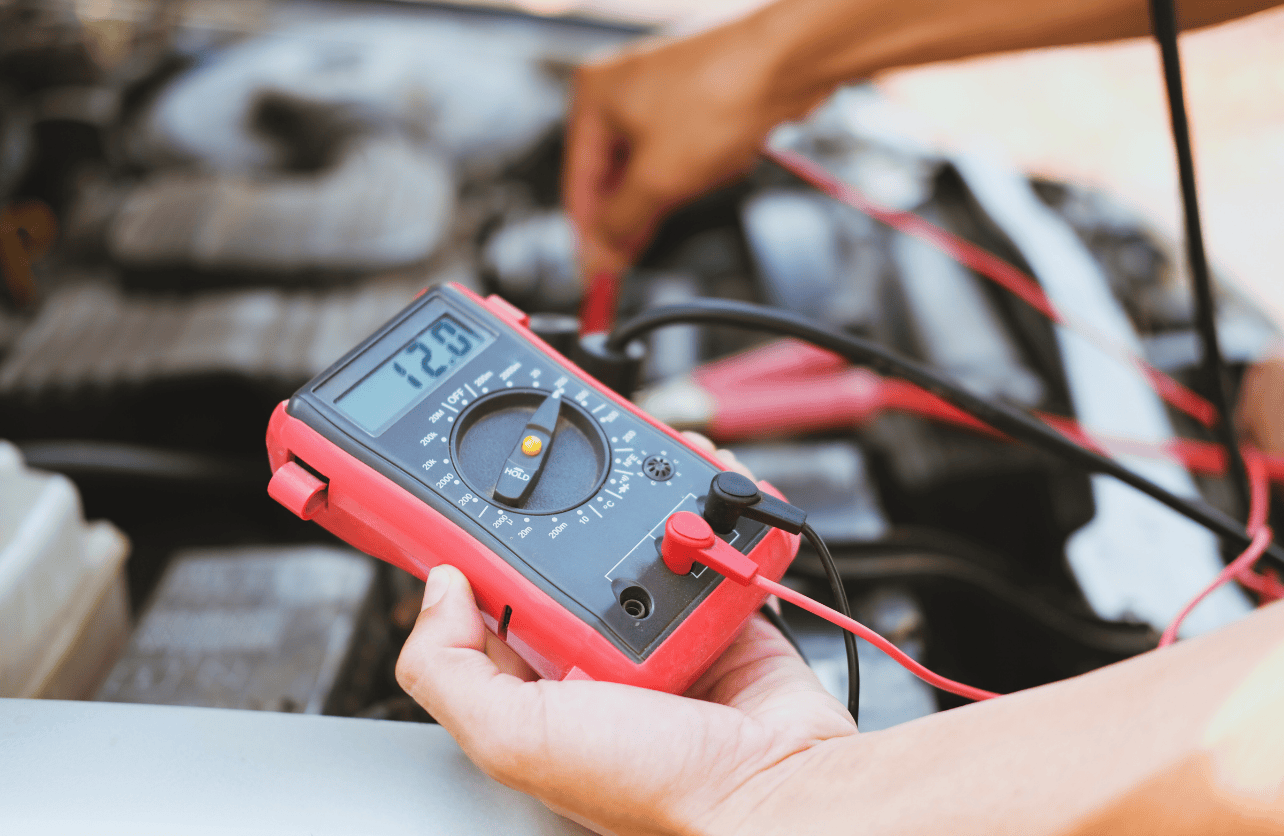Understanding Normal Car Battery Voltage and How to Maintain It

A car’s battery is the heart of its electrical system, powering everything from the ignition to the headlights. Knowing the normal voltage range of your car battery can help you identify potential issues before they become major problems. This guide explains standard car battery voltage, how to measure it, and tips for maintaining battery health.
What is Normal Car Battery Voltage?
Car batteries are typically 12-volt lead-acid batteries made up of six individual cells, each producing approximately 2.1 volts. When fully charged and with the engine off, a healthy car battery should read between 12.6 and 12.8 volts.
When the engine is running, the alternator charges the battery, and the voltage increases to 13.7 to 14.7 volts. This higher voltage ensures that the battery remains charged while supplying power to the vehicle’s electrical systems.
Voltage Ranges and What They Mean
Understanding what your car battery’s voltage reading indicates is essential for diagnosing its condition:
- 12.6 – 12.8 Volts (Engine Off):
- This range signifies a fully charged and healthy battery.
- Your car should start reliably with no issues.
- 12.4 – 12.6 Volts:
- The battery is slightly undercharged but still functional.
- It’s a good idea to recharge the battery or ensure the alternator is properly charging it during operation.
- 12.0 – 12.4 Volts:
- The battery is significantly undercharged and may struggle to start the engine.
- Immediate charging is recommended to avoid further depletion.
- Below 12.0 Volts:
- This indicates a discharged battery that likely won’t start the vehicle.
- A full recharge or potential replacement may be necessary.
How to Measure Car Battery Voltage
Testing your car battery is a straightforward process that requires a multimeter:
- Prepare the Multimeter:
- Set the multimeter to the DC voltage setting, ideally within the 20V range.
- Connect the Leads:
- Attach the red lead to the positive (+) terminal of the battery.
- Attach the black lead to the negative (-) terminal.
- Read the Voltage:
- With the engine off, a reading between 12.6 and 12.8 volts indicates a fully charged battery.
- If the engine is running, the voltage should read between 13.7 and 14.7 volts.
- Perform a Load Test:
- For a more comprehensive test, apply a load to the battery, such as turning on the headlights or radio, while monitoring the voltage.
- A significant drop in voltage under load may indicate a weak or failing battery.
Factors Affecting Battery Voltage
Several factors can influence your car battery’s voltage and overall performance:
- Temperature Extremes:
- Cold weather can reduce a battery’s efficiency, while excessive heat can accelerate internal wear.
- Age of the Battery:
- Most car batteries last between 3 to 5 years. As they age, their ability to hold a charge diminishes.
- Driving Habits:
- Frequent short trips prevent the alternator from fully charging the battery. Conversely, long drives help maintain optimal charge levels.
- Electrical Load:
- High use of electrical components like air conditioning, lights, and in-car entertainment systems can strain the battery.
Tips for Maintaining a Healthy Battery
Keeping your car battery in good condition is essential for reliable performance. Here are some maintenance tips:
- Regular Inspections:
- Check the battery terminals for corrosion and clean them as needed. Ensure all connections are tight and secure.
- Charge the Battery:
- If your car isn’t used regularly, invest in a battery maintainer to keep it charged.
- Avoid Deep Discharges:
- Letting the battery drain completely can shorten its lifespan.
- Monitor Voltage Regularly:
- Use a multimeter to check your battery’s voltage periodically, especially before long trips or during seasonal weather changes.
- Replace When Necessary:
- If your battery consistently shows low voltage or struggles to start the car, it’s time to replace it.
Signs of a Failing Battery
Even with proper maintenance, car batteries eventually wear out. Look for these warning signs:
- Slow engine cranking
- Dim headlights
- Electrical system malfunctions (e.g., power windows or radio not functioning correctly)
- A warning light on the dashboard, typically shaped like a battery
If you notice these symptoms, test your battery and consult a mechanic if necessary.
Final Thoughts
Understanding and maintaining normal car battery voltage is crucial for keeping your vehicle running smoothly. By regularly checking the voltage, addressing issues promptly, and following good maintenance practices, you can extend the life of your battery and avoid unexpected breakdowns.